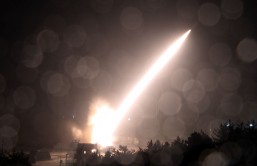Columbia and Harvard universities disclosed that Indonesia haze in 2015 most probably was responsible for more than 100,000 premature deaths in areas closest to fire.
The new study that would be published in journal Environmental Research Letters, was using satellite information with images of health impacts from smoke exposure and combined them with readings from pollution monitoring stations in order to know the consequences of last year's haze.
It's estimated that 100,300 had died prematurely across the three countries - 2,200 in Singapore, 6,500 in Malaysia and 91,600 deaths in Indonesia.
Those deaths were related to respiratory illnesses and added pressure on the government to deal with the crisis while triggering calls for action to tackle the "killer haze".
The pollution occurs every year. It's caused by the burning of forests and carbon-rich peatlands that people in Indonesia practice in order to clear the land for palm oil and pulpwood plantations as quick and cheap as they possibly can.
The fires happen mainly on the Indonesian part of Borneo and Sumatra Island. But monsoon winds usually blow the haze over Malaysia and Singapore. So, the smoke flows across South East Asia and it can last for several months (like in 2015).
Indonesia has frequently been accused of not taking appropriate measurements to tackle the big problem.
Greenpeace Indonesia forest campaign Yuyun Indradi says: "If nothing changes, this killer haze will carry on taking a terrible toll, year after year."
"Failure to act immediately to stem the loss of life would be a crime."
A representative of Indonesia's environment ministry didn't immediately give any comment. The authorities have formerly insisted they are constantly working on improving their haze-fighting efforts like banning the giving of new land for palm oil plantations to farmers. They have also established an agency for restoring devastated peatlands.
The sad fact is that Greenpeace only saw health impacts on adults and what is the effect of dangerous fine particulate matter, also known as PM 2.5. The effect on youngest population and the other toxins produced by the fires haven't been examined.
That is disturbing acknowledgment because infants are at much bigger risk from the haze than grown-ups.
"We are the doctors who care for the vulnerable groups exposed to toxic smoke in every medical centre, and we know how awful it is to see the disease symptoms experienced by babies and children in our care," said Nursyam Ibrahim, from the West Kalimantan province branch of the Indonesian Medical Association on Borneo
Last year's haze inception was the worst since 1997 because of a strong El Nino weather system that created tinder-dry conditions in Indonesia. As a result, forests and peatland are more vulnerable to going up in the blaze.








